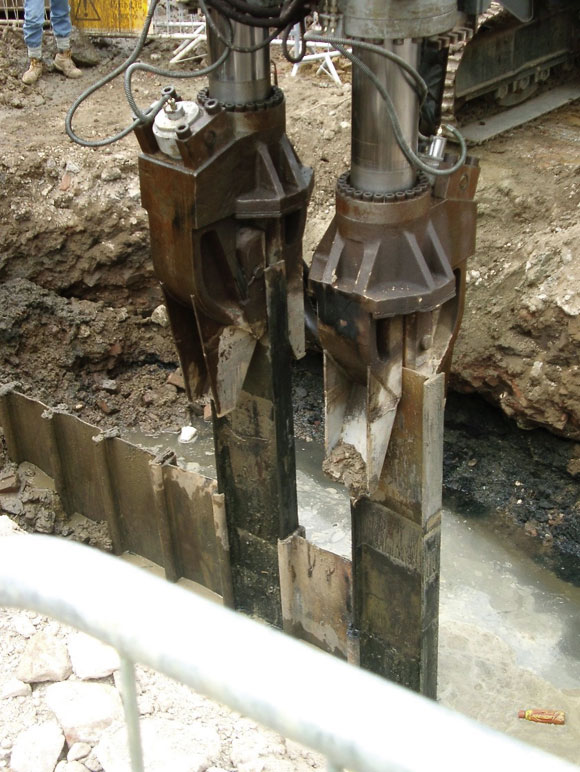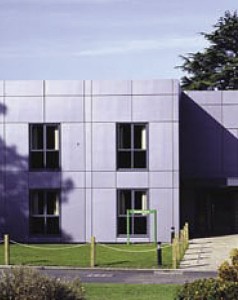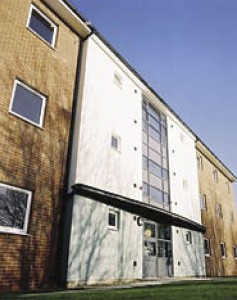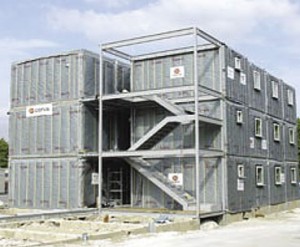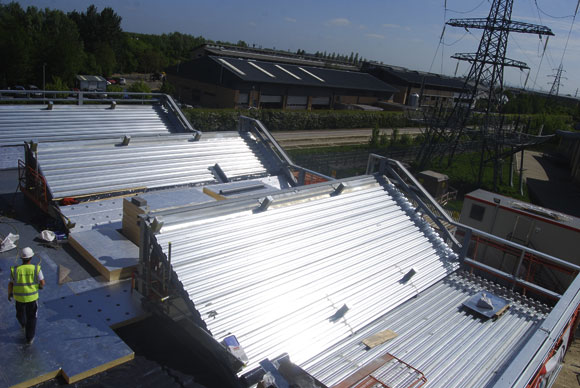Projects and Features
Steel is designed for minimum waste
Minimising and where possible eliminating waste from construction operations is a key part of the UK’s sustainability drive. Nick Barrett details why designing and building in steel is the best way to ensure waste minimisation.
There is an estimated 90M tonnes of construction and demolition waste generated in the UK each year. In the past much was sent to landfill but this is now recognised as a non sustainable solution.
The challenge for designers today is to minimise waste through all the stages of a buildings‘ life from design, through construction to refurbishment/adaptation to eventual demolition and site redevolpment. Designing in steel is one way in which architects and engineers already ensure that waste is minimised.
Waste is not only unwanted or discarded materials. Efficient designs minimise resource use and promote a “get it right first time” culture that eliminates a lot of the potential for waste. Efficient design has other benefits, such as producing buildings that are economical to maintain at appropriate temperatures for their users.
Perhaps the most important waste minimisation benefits from using constructional steelwork derive from the fact that production is predominantly an offsite process, which fosters creation of high quality structures, with low defects and a correspondingly little waste.
There are few waste products from steel production. For example, blast furnace slag is now used as a valuable secondary raw material in the cement industry and is no longer classified as a waste product.
Energy efficiency
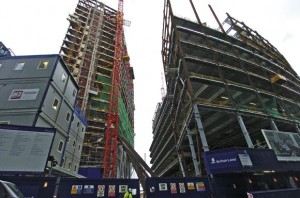
Efficient design minimises resource use, such as at the Broadgate and Bishopsgate development in the City of London
Corus has made great strides in recent years towards energy efficiency of its production processes and the energy needed to produce steel is now about 40% less than in the 1970s.
Waste during the manufacture of steel components is typically below 3%, and even this does not go to landfill as it is all recycled. On construction sites there is virtually no waste at all from steel and since 1992 Corus has reduced waste going to UK landfill by 62%.
Steel has a positive value at the end of its working life and its scrap value is used to offset development costs. Other materials are only suitable for downcycling (low grade recycling which does not generate products with the same properties as the original) and impose a demolition cost on the developers.
There is no hazardous wash out water and shuttering waste generated with steel; concrete for example generates an estimated 67% by weight of all construction and demolition waste.
Pile extraction
Careful selection of material for piling is proving to be a crucially important design decision as concrete piles are creating a legacy problem in areas such as central London, where they are proving to be extremely difficult to remove. Some sites are said to be becoming blighted as a result, wasting valuable and scarce development land.
Steel piles by contrast are easy to remove. Widely available technology now allows for quick and quiet extraction of redundant steel piles, allowing sites to be speedily redeveloped. Any steel recovered can be either reused or recycled.
In some cases the steel piles can be left in situ and used to support the next generation of building. Steel piles have been removed from the ground in near perfect condition after 100 years.
The ease with which redundant steel piles can be dealt with is found on a recent development site in Chelsea, where the Grosvenor Waterside development consists of a number of apartment blocks situated around two historic docks adjacent to Chelsea Bridge.
A number of old steel piles were discovered dating back to the early 1900s, the steel piles where originally installed to support a retaining wall around one of the docks. Now these 4m-long piles were in the way and a number of them had to be extracted.
Dawson Construction Plant (DCP) used specialist plant designed for quick and quiet steel pile extraction, which was important as the site is in the middle of a dense residential area.
DCP removed 24 piles in total, in four separate areas, over a week. Because the piles were submerged in extremely wet ground they were relatively easy to remove. The water also prevented corrosion, and once the first pile was pulled from the ground its pristine condition became apparent.
“This job perfectly demonstrates the durability of steel as even after nearly 100-years of service life it doesn’t necessarily corrode,” David Rowbottom, Corus Technical Sales & Marketing Manager says. “The piles were so well preserved we could even make out the rolling marks and the name Frodingham, which was the mill in Scunthorpe which produced them,” he says.
Living Solutions
Modular construction provides energy efficient buildings thereby reducing CO2 emissions over the life of a building. The efficiency of factory production reduces the amount of waste produced and modular construction generally requires less material than traditional construction methods.
Corus’ Living Solutions business unit provides an opportunity to highlight how building with steel minimises waste. Corus has developed products which are lighter, stronger, and perhaps more importantly, consume less energy when they are used.
Corus Living Solutions takes a strong stance on sustainability by minimising waste through use of precision materials in the factory and a structured approach to the recycling of any waste materials generated.
The average number of deliveries to the building site has been reduced by up to 75% compared to traditional construction techniques. Living Solutions tracks and provides full traceability of all modules using a unique identification number. This will identify all materials used and can form part of any life cycle assessment for buildings.
Living Solutions has designed energy efficient buildings reducing CO2 emissions over their lives. At the end of its life, a building can be demounted with the potential for reuse elsewhere.
Living Solutions produced the first modular buildings in the UK to achieve a BREEAM rating of excellence. A demonstrator project at Perham Down, completed in 2005, included a rainwater harvesting system, solar heating panels, low carbon index and low energy consumption levels.







